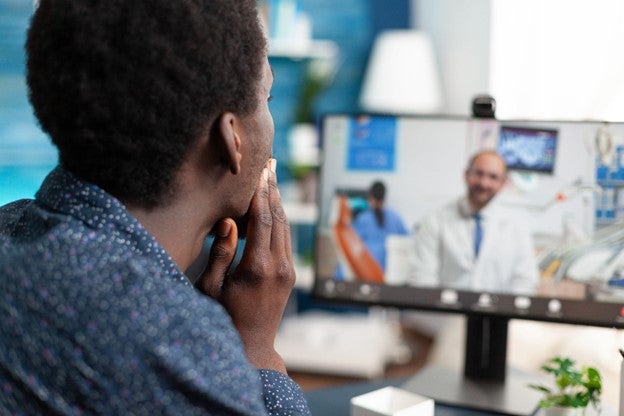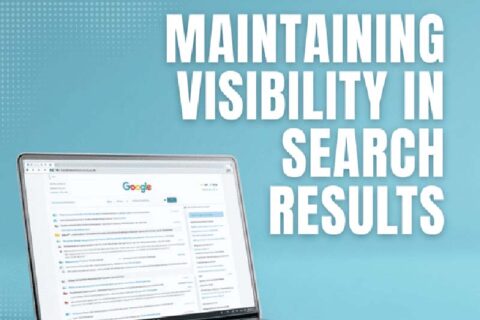Telehealth: Integrating Virtual Visits into Traditional Practices

Telehealth has revolutionized the way healthcare is delivered, offering significant advantages for both patients and providers. In recent years, the adoption of telehealth has surged, driven by the need for more accessible and flexible healthcare solutions. According to the American Medical Association, telehealth utilization increased by 53% from 2016 to 2017, and this trend accelerated further during the COVID-19 pandemic, with a 154% increase in telehealth visits in March 2020 alone compared to the same period in 2019.
For small to mid-sized private practices, integrating virtual visits into traditional practice models is not just an option but a necessity. Telehealth can enhance patient engagement, improve satisfaction, and extend the reach of medical services to underserved and rural areas. This article delves into the benefits and challenges of adopting telehealth services and offers practical strategies for seamless integration into existing practice models. By embracing telehealth, practices can improve patient care, optimize their operations, and remain competitive in an increasingly digital and patient-centric healthcare environment.
Benefits of Adopting Telehealth Services

Increased Accessibility and Convenience for Patients
Telehealth significantly enhances accessibility and convenience for patients. With the ability to consult healthcare providers from the comfort of their own homes, patients save time and avoid the hassle of commuting and waiting in crowded waiting rooms. This is particularly beneficial for individuals with mobility issues, chronic illnesses, or those living in remote areas. A study by McKinsey & Company revealed that up to 76% of patients are interested in using telehealth moving forward, underscoring the growing demand for these services.
Improved Patient Engagement and Satisfaction
Telehealth can lead to improved patient engagement and satisfaction. Virtual visits often allow for more flexible scheduling, enabling patients to seek medical advice without disrupting their daily routines. Additionally, telehealth platforms frequently incorporate tools for monitoring and managing health conditions, such as remote patient monitoring and digital health records. These features empower patients to take an active role in their healthcare, which can lead to better adherence to treatment plans and overall satisfaction. According to Tanya Ngo in a Student-Run Free Clinic, 97.6% of patients who used telehealth services were satisfied with the experience.
Enhanced Efficiency and Reduced Overhead Costs for Practices
For healthcare providers, telehealth can enhance operational efficiency and reduce overhead costs. Virtual visits streamline the appointment process, allowing providers to see more patients in less time. This efficiency translates into cost savings, as practices can reduce expenses related to physical office space, utilities, and administrative tasks.
Broader Reach, Especially in Rural or Underserved Areas
Telehealth enables practices to extend their reach to rural or underserved areas where access to healthcare is often limited. By removing geographical barriers, telehealth ensures that patients in these regions receive timely and appropriate medical care. Telehealth helps bridge this gap, providing critical healthcare services to populations that might otherwise go without.
Potential for Better Patient Outcomes
The integration of telehealth into traditional practices has the potential to improve patient outcomes. Continuous and convenient access to healthcare can lead to earlier detection and treatment of medical conditions, reducing the likelihood of complications. Telehealth also facilitates better management of chronic diseases through regular monitoring and follow-up care. Telehealth interventions have been associated with improved clinical outcomes in patients with chronic conditions such as diabetes and hypertension.
Practices not only enhance the patient experience but also optimize their operations and extend their impact by adopting telehealth services. These benefits collectively contribute to a more efficient, accessible, and effective healthcare system.
Challenges of Implementing Telehealth

Technological Barriers and Requirements
Implementing telehealth requires overcoming several technological barriers and meeting specific requirements. Reliable internet connectivity is crucial for high-quality virtual consultations. However, not all patients or providers have access to high-speed internet, particularly in rural areas. Additionally, both parties must have compatible devices such as smartphones, tablets, or computers equipped with webcams and microphones. Practices need to invest in telehealth platforms and software that integrate seamlessly with their existing systems, which can be a significant financial and logistical challenge.
Ensuring Patient and Data Security
One of the primary concerns with telehealth is ensuring patient and data security. Healthcare providers must comply with regulations like the Health Insurance Portability and Accountability Act (HIPAA) to protect sensitive patient information. Telehealth platforms must offer robust encryption and secure data storage solutions to prevent unauthorized access and data breaches. Providers also need to educate patients on best practices for maintaining privacy during virtual visits, such as using secure internet connections and avoiding public Wi-Fi.
Adjusting to New Workflows and Processes
Integrating telehealth into traditional practice models involves adjusting to new workflows and processes. Healthcare providers must adapt to conducting consultations online, which may require changes in communication styles and examination techniques. Administrative staff need to manage virtual appointments and ensure that all necessary documentation and billing procedures are followed. The transition to telehealth can disrupt established routines and require a period of adjustment for both providers and patients.
Regulatory and Reimbursement Issues
Navigating regulatory and reimbursement issues is a significant challenge in telehealth implementation. Telehealth regulations vary by state, and providers must ensure they comply with licensure requirements and practice standards in each jurisdiction where they offer services. Reimbursement policies for telehealth services also differ among insurance providers and government programs, leading to potential disparities in compensation. Practices must stay informed about the latest regulatory updates and advocate for fair reimbursement policies to ensure the financial viability of telehealth services.
Training Staff and Educating Patients
Successfully implementing telehealth requires comprehensive training for staff and education for patients. Providers and administrative staff need to be proficient in using telehealth platforms, troubleshooting technical issues, and delivering care through virtual channels. Training programs should cover best practices for telehealth consultations, patient communication, and data security. Additionally, patients must be educated on how to access telehealth services, navigate the technology, and prepare for virtual visits. Clear instructions and support resources can help alleviate anxiety and ensure a positive telehealth experience for patients.
Addressing these challenges is essential for the successful implementation of telehealth services. By overcoming technological barriers, ensuring data security, adjusting workflows, navigating regulatory and reimbursement issues, and providing thorough training and education, healthcare practices can integrate telehealth into their traditional models effectively. This integration not only enhances patient care but also positions practices to thrive in the evolving healthcare landscape.
Strategies for Seamless Integration

Assessing Practice Readiness and Identifying Needs
The first step in seamlessly integrating telehealth into traditional practice models is to assess the readiness of the practice and identify specific needs. This involves evaluating the current technological infrastructure, understanding patient demographics, and determining the types of services that can be effectively delivered via telehealth. Conducting a thorough needs assessment helps practices develop a clear roadmap for implementation, ensuring that resources are allocated efficiently and potential challenges are addressed proactively.
Choosing the Right Telehealth Platform
Selecting the right telehealth platform is crucial for successful integration. Practices should choose a platform that is user-friendly, secure, and compliant with regulatory standards such as HIPAA. The platform should offer features like high-quality video conferencing, secure messaging, appointment scheduling, and integration with electronic health records (EHR) systems. Evaluating multiple telehealth platforms and conducting trials can help practices find the solution that best meets their needs and provides a seamless experience for both providers and patients.
Implementing Phased Rollouts and Pilot Programs
To ensure a smooth transition, practices should consider implementing phased rollouts and pilot programs. Starting with a small-scale pilot allows the practice to test the telehealth system, identify any technical issues, and gather feedback from both providers and patients. This phased approach enables the practice to make necessary adjustments before a full-scale launch. Gradually expanding the telehealth services helps staff and patients acclimate to the new system and ensures that any unforeseen challenges are managed effectively.
Training Staff and Providing Ongoing Support
Comprehensive training for staff is essential for the successful integration of telehealth services. Providers, administrative staff, and IT personnel should receive training on how to use the telehealth platform, troubleshoot common issues, and deliver care virtually. Training programs should cover best practices for telehealth consultations, patient communication, and data security. Additionally, providing ongoing support and resources ensures that staff remain confident and proficient in using the telehealth system. Regular updates and refresher courses can help keep the team informed about new features and industry standards.
Promoting Telehealth Services to Patients
Effective promotion of telehealth services is key to encouraging patient adoption. Practices should communicate the availability and benefits of telehealth through various channels, such as their website, social media, email newsletters, and in-office signage. Providing clear instructions on how to access telehealth services and what to expect during a virtual visit can help alleviate any concerns patients may have. Offering informational sessions or webinars can also educate patients about the convenience and effectiveness of telehealth, fostering a positive perception and increasing utilization.
By following these strategies, practices can integrate telehealth services seamlessly into their traditional models. Assessing readiness, choosing the right platform, implementing phased rollouts, training staff, and promoting services to patients are critical steps that ensure a smooth transition. Embracing telehealth not only enhances patient care and satisfaction but also positions practices for success in an increasingly digital healthcare environment.
Types of Telehealth Services

Telehealth encompasses various service types, each with distinct applications and benefits. Understanding these types is crucial for effectively integrating telehealth into traditional healthcare practices.
Synchronous vs. Asynchronous Telehealth
- Synchronous Telehealth: Synchronous telehealth involves real-time, interactive communication between patients and healthcare providers. This can be achieved through video calls, phone calls, or live chats. Synchronous telehealth is ideal for immediate consultations, follow-up visits, and real-time assessments. It allows for direct interaction and immediate feedback, closely mimicking traditional face-to-face visits. A 2020 study published in the Journal of Medical Internet Research found that patient satisfaction with synchronous telehealth was comparable to in-person visits, highlighting its effectiveness and convenience.
- Asynchronous Telehealth: Asynchronous telehealth, also known as store-and-forward telehealth, involves the collection and transmission of patient information, such as medical images, lab results, and patient histories, to healthcare providers for later review. This method does not require simultaneous interaction, making it useful for non-urgent consultations and routine follow-ups. Asynchronous telehealth enables providers to review and analyze patient data at their convenience, facilitating efficient and thorough assessments. According to the American Telemedicine Association, this method is particularly beneficial in dermatology, radiology, and pathology.
Remote Patient Monitoring
Remote patient monitoring (RPM) uses digital devices to collect health data from patients in one location and transmit it to healthcare providers in another. Devices such as blood pressure monitors, glucose meters, and wearable sensors track vital signs and other health metrics. RPM is especially valuable for managing chronic conditions like diabetes, hypertension, and heart disease. Continuous monitoring allows for timely interventions and better disease management. A study in the Journal of Medical Systems reported that RPM significantly reduced hospital readmissions and improved patient outcomes.
Mobile Health Applications
Mobile health (mHealth) applications are software programs that patients can download on their smartphones or tablets. These apps offer a wide range of functionalities, including appointment scheduling, medication reminders, symptom tracking, and access to telehealth consultations. mHealth apps empower patients to actively manage their health and provide convenient access to healthcare services. The global mHealth market is projected to reach $189 billion by 2025, reflecting the growing popularity and potential of mobile health solutions.
Store-and-Forward Technology
Store-and-forward technology enables healthcare providers to collect, store, and transmit patient information, such as medical images, documents, and videos, to specialists for evaluation at a later time. This method is particularly useful in specialties like dermatology, radiology, and pathology, where detailed visual information is essential for accurate diagnosis. Store-and-forward technology enhances collaboration among healthcare providers and ensures timely and accurate diagnostic results. The World Health Organization highlights the efficiency of store-and-forward telehealth in improving access to specialist care, particularly in underserved areas.
Telehealth for Mental Health Services
Telehealth has proven to be highly effective in the field of mental health. Telepsychiatry and teletherapy provide patients with access to mental health professionals through video calls, phone calls, and online messaging. This is particularly beneficial for individuals in remote areas or those who may feel more comfortable receiving mental health services from the privacy of their homes. The American Psychiatric Association reports that telepsychiatry is as effective as in-person therapy, with high levels of patient satisfaction and improved access to care.
Understanding the different types of telehealth services enables healthcare practices to select and implement the most appropriate solutions for their patient populations. By leveraging a combination of synchronous, asynchronous, RPM, mHealth, and store-and-forward technologies, practices can provide comprehensive and accessible care to their patients.
Best Practices for Telehealth Consultations
Implementing telehealth consultations requires adherence to several best practices to ensure effective, secure, and satisfactory patient experiences. These practices help in maintaining professionalism, ensuring thorough assessments, and upholding patient privacy.
Setting Up a Professional and Secure Environment
Creating a professional and secure environment is essential for telehealth consultations. Healthcare providers should choose a quiet, private space with good lighting and a neutral background to minimize distractions. The environment should mirror the professionalism of an in-person visit, helping to establish trust and credibility with patients.
Security is equally important. Using secure, encrypted telehealth platforms compliant with regulatory standards such as HIPAA is crucial to protect patient data. Regularly updating software and using strong passwords can further enhance security. Providers should also ensure that their internet connection is stable to prevent interruptions during consultations.
Effective Communication Techniques for Virtual Visits
Effective communication is key to successful telehealth consultations. Providers should maintain eye contact by looking directly at the camera, use clear and concise language, and actively listen to patients’ concerns. Non-verbal cues, such as nodding and smiling, can also help convey empathy and understanding.
It’s important to establish rapport at the beginning of the visit by introducing oneself and explaining the process of the virtual consultation. Providers should encourage patients to ask questions and provide feedback throughout the session to ensure that their concerns are addressed comprehensively.
Conducting Thorough and Accurate Assessments
Conducting thorough and accurate assessments via telehealth requires careful attention to detail. Providers should begin with a detailed history-taking, asking open-ended questions to gather comprehensive information about the patient’s condition. They should guide patients through self-examinations when necessary, providing clear instructions on how to perform specific tasks or use diagnostic tools like thermometers or blood pressure monitors.
Using telehealth tools and resources, such as digital stethoscopes or otoscopes, can enhance the accuracy of virtual assessments. Providers should document all findings meticulously and consider follow-up in-person visits if certain conditions require physical examination.
Ensuring Patient Privacy and Confidentiality
Patient privacy and confidentiality are paramount in telehealth. Providers must ensure that telehealth platforms are secure and compliant with privacy regulations. Conducting consultations in private spaces where conversations cannot be overheard is essential.
Providers should educate patients on their role in maintaining privacy, such as choosing a private location for the consultation and ensuring that their devices are secure. Discussing confidentiality policies at the beginning of the consultation can help reassure patients that their information is protected.
Follow-Up and Continuity of Care
Follow-up and continuity of care are critical components of effective telehealth services. Providers should schedule follow-up appointments as needed and ensure that patients understand their care plans. Using electronic health records (EHR) systems to document telehealth visits and coordinate care with other healthcare providers helps maintain continuity.
Providers should also establish clear communication channels for patients to reach out with any questions or concerns between appointments. Offering patient education materials, such as handouts or links to reliable online resources, can further support patients in managing their health conditions effectively.
By adhering to these best practices, healthcare providers can ensure that telehealth consultations are professional, effective, and secure, ultimately enhancing patient satisfaction and care outcomes.
Embracing Telehealth: The Path Forward for Modern Healthcare
Integrating telehealth into traditional practice models offers a transformative opportunity for healthcare providers to enhance patient care, increase accessibility, and improve operational efficiency. By leveraging the benefits of telehealth, such as increased convenience, better patient engagement, and the ability to reach underserved areas, small to mid-sized practices can stay competitive in an evolving healthcare landscape. However, the successful implementation of telehealth requires overcoming challenges related to technology, data security, regulatory compliance, and workflow adjustments.
Healthcare practices must adopt a strategic approach, including thorough readiness assessments, choosing the right telehealth platforms, and implementing phased rollouts. Comprehensive training for staff and clear communication with patients are essential to ensure a seamless transition. Additionally, understanding the various types of telehealth services and adhering to best practices for virtual consultations can further optimize the integration process.
By embracing telehealth, practices not only improve patient outcomes and satisfaction but also position themselves at the forefront of modern healthcare innovation. The journey towards integrating virtual visits into traditional practices is a critical step in building a more accessible, efficient, and patient-centric healthcare system.


